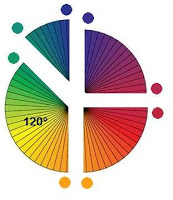Analogous colors are those who are next in the chromatic circle up to the maximum of one third (120 °) of the same. For example, the yellow linda with the colors Orange and green in each of its ends, if we subtract the distance degrees could also say that its analogues are yellowish greenish-yellow and orange colors.
Different distances may be taken to determine the analog color of another and getting more or less soft effects or contrastares.
Analogous colors produce a feeling of harmony therefore is the fundamental basis of the harmonic scheme in the choice of the colours of the decoration and the walls.

















0 comments:
Post a Comment